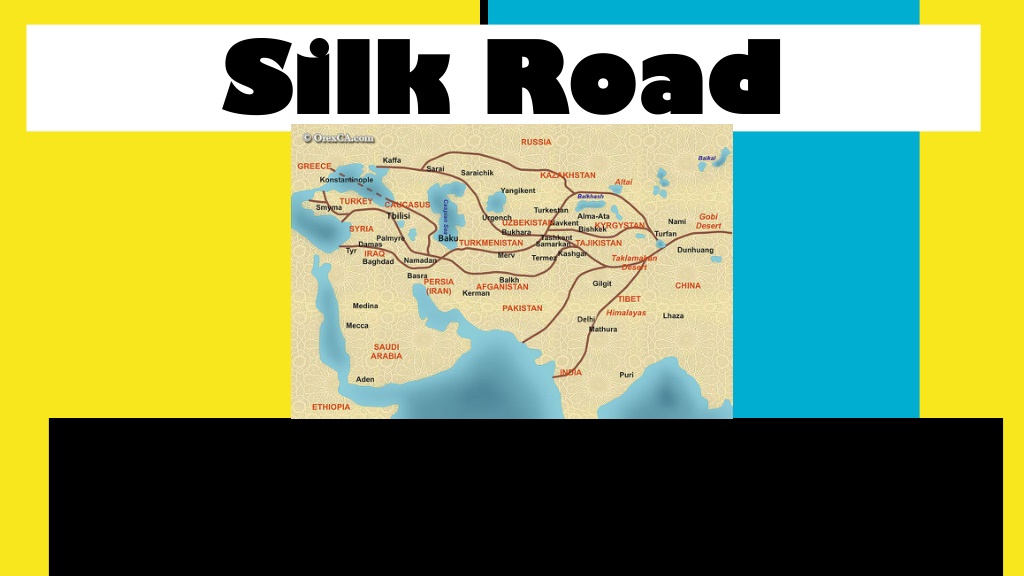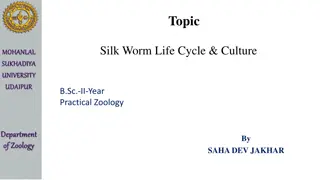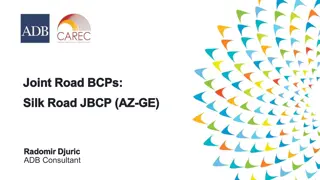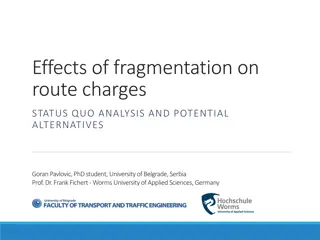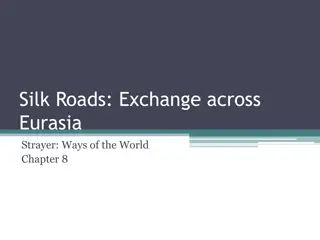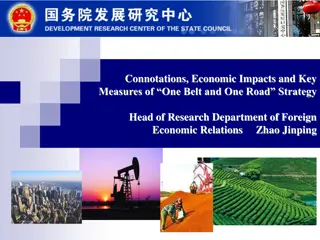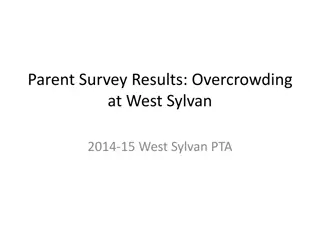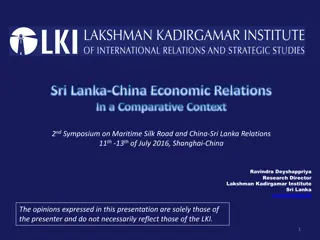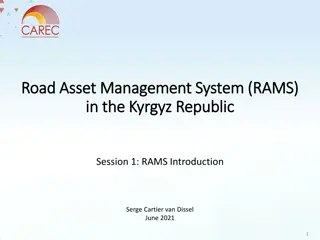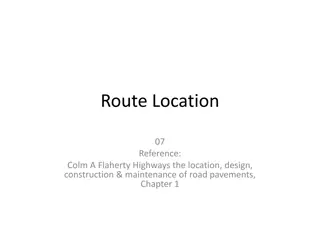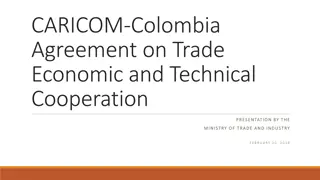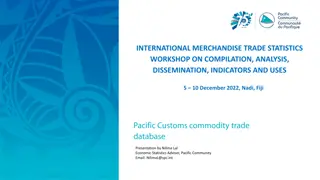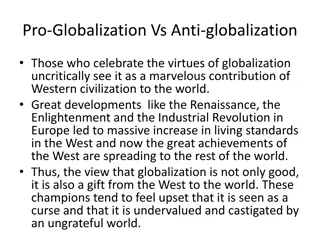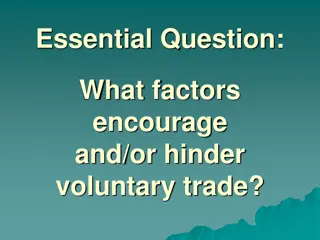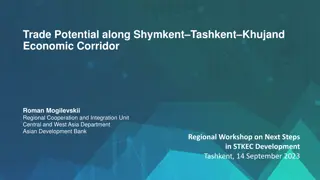The Silk Road: A Historical Overview of East-West Trade Route
The Silk Road was a vital trade network connecting East and West, facilitating the exchange of goods, ideas, and cultures from ancient times until about 1450 CE. Starting from China and extending to Byzantium, it played a significant role in shaping global interactions, impacting economies, religions, and the spread of knowledge.
Download Presentation

Please find below an Image/Link to download the presentation.
The content on the website is provided AS IS for your information and personal use only. It may not be sold, licensed, or shared on other websites without obtaining consent from the author. Download presentation by click this link. If you encounter any issues during the download, it is possible that the publisher has removed the file from their server.
E N D
Presentation Transcript
Silk Road Silk Road By Dylan Lembo, Mara Bennett, Sarah Galvin, Spencer Westcott, and Jeff Petrulla
Overview: The Eurasian Silk Road was the greatest East to West trade route between China, Central Asia, and Byzantium. This ancient route between East and West was established during 206 BC to 220 AD in Han Dynasty of China for political contact with the many Kingdoms of Central Asia and also to connect China with the West. The Silk Road consisted of a network of both land and sea routes. Not just silk from China, but many Eastbound caravans also brought gold, metals and stones, ivory, coral, spices, tea, and textiles along the Eurasian Silk Road. Silk was the most prominent product because it was used as the basis of currency for China. The religious beliefs of Buddhism and Nestorianism also were able to be exchanged among new global areas. As the demand of merchandise increased, Europe, India, and the Far East became involved bringing with them missionaries monks and military men that traveled the Silk Road. Myths and legends were also exchanged from the 8th to the 10th century and lively depicted the social structures and political relationships between countries. The Silk Road allowed people to interact which also enabled cultures, religion, technology, and skills of art to be diffused among the world.
Periodization 120-130 BC: First person to traverse the Silk Road is Zhang Qian, an explorer sent by Emperor Wudi of the Han Dynasty to form an alliance with a western nomad tribe. 1 AD: Silk begins becoming popular in Rome, a sure sign of Silk Road expanse. 600 AD: The Tang dynasty ushers in a two century long golden age for the Silk Road. Connects more and more area, boosts Chinese economy. 1100-1200 AD: Genghis Khan united the Mongols, expands Mongolia and captures the Silk Road. It flourishes again under Pax Mongolica with strong policing by the Mongols, with travel being introduced to the Silk Road. 1400 AD: Mongols lose power, Ming dynasty slows trade and Silk Road no longer trades silk. 1800 AD: The name Silk Road is coined by Baron Ferdinand von Richthofen,
Historiographical Perspective Although this trade route fits into idea of world systems analysis, as subscribed to followers of Wallerstein, Janet Abu-Lughod has a more appropriate historiographical view on this trade route. The Silk Road had an oriental centered view, since it thrived mainly in the East, outside of European hegemony. Even though the Silk Road impacted the West, it operated almost entirely in Asia, stretching from the Eastern Byzantine Empire to the center of China.
Significance and Importance of the Eurasian Silk Road The Silk Road connected the east and the west through an exchange of commodities, lasting until about 1450 CE. From the result of the increased trade and communication, there was the import of the world s development in invention and ideas shared throughout the opposite hemispheres. The Mongols emerge from the Asian steppes in the early 13th centuries. Because of this emergence, the Mongols opened the South and Southeast Asia region to the Silk Road. In 1330 CE, Asia had spurred the beginning of the Bubonic Plague. The plague was spread through the Silk Road that was newly emerged in the Asian region. The plague changes Europe s demographics and impacts the Silk Road immensely. Because of the many people dying from the plague, wages go up in the commerce of commodities. There are not as many people to manufacture the goods, so there is less product. Therefore, goods become more expensive causing less commerce and ultimately leading to the downfall of the Silk Road.
AP Theme #2 -The second AP Theme is the development and interaction of culture -On the Silk Road, Buddhism really blossomed -Within 5 centuries of the Silk Road being opened, about 90% of China s population converted to Buddhism - Buddhism is not indigenous to China. It is a foreign import from northern India.
AP Theme #4 -AP Theme #4 is the creation, expansion, and interaction of economic systems -traders distributed goods across their region's markets in search of the best price - China, the Indian subcontinent, Persia, Europe, the Horn of Africa and Arabia,
